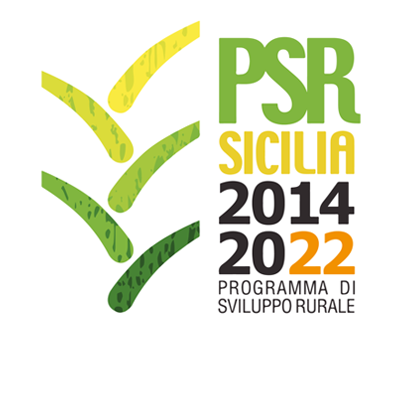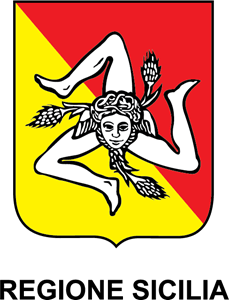Wipptaler
Country
Specie
ISO3
AUT
Language
ger.
Breed classification (adaptedness)
Native
Breed classification (geographic)
Local
Domestication status
domestic
Taxonomic classification
Variety
Description of origin
absorbed in Tyrolean Grey
Location within country
Tyrol
Local cryo conservation status
No Material
Local Risk
Extinct
Detailed local risk status
Extinct
Waldviertler Blondvieh
Country
Specie
ISO3
AUT
Language
ger.
Other name
Manhartsberg, Schiltern, Waldviertler, Waldviertler Vieh
Breed classification (adaptedness)
Native
Breed classification (geographic)
Local
Adaptability to specific environment
The breed is well adapted to rough climate.
Special characteristic of product
This breed produces high quality meat.
Other special qualities
This breed is known for hard claws and wad famous for its draught power
Efabis adaptability to marginal land
lime-free pastures
Color comments
Solid coloured: red, brown, white, blond with wax coloured horns and claws, flesh coloured muzzle
Efabis main colour
Yellowish white to light red
Efabis skin colour
Flesh
Number of horns males
2
Number of horns females
2
Wither height males
140
Wither height females
132
Weight males
900.00
Weight females
575.00
Herdbook
y
Herdbook established
1939
Domestication status
domestic
Taxonomic classification
Breed
Description of origin
composite of local strains and Tschechisches rotes Höhenvieh
Year of origin
19
Import
1970 to 1980 5% from Glan-Donnersberger (Germany) and Gelbvieh (Germany)
Location within country
Lower Austria; Upper Austria
Local cryo conservation status
Sufficient
Local Risk
At Risk
Detailed local risk status
Endangered maintained
Tux-Zillertaler
Country
Specie
ISO3
AUT
Language
ger.
Other name
Tirolense, Tux-Zillertaler
Breed classification (adaptedness)
Native
Breed classification (geographic)
Local
Efabis cultural role comment
Tyrolean custom
Efabis cultural value
Kuhstechen
Adaptability to specific environment
: Cows are fighting each other in the spring. Originally the winner and her herd got the best mounain pastures in summer. Now only for show.
Specific reproductive characteristic
The breed is well adapted to the local environment (high mountain country)(Ger.
Other special qualities
Alptüchtig
Efabis genetic features
).
Body conformation
A very good meat quality with a low fat content is reported for this breed.
Shank and foot colour
mountainous country
Wither height males
Solid coloured: black, red or brown with white markings on pelvis, base of tail, hypogastrium, belly and udder. Dark skin colour, black muzzle and claws.
Wither height females
Black; red
Weight males
0.00
Weight females
2.00
Other specific visible traits
2
Herdbook
Curved upward and forward, wax coloured at the base with black tips.
Herdbook established
130
Domestication status
125
Taxonomic classification
1100
Description of origin
600
Year of origin
0
Import
y
Local cryo conservation status
domestic
Local Risk
Breed
Detailed local risk status
Local breed, probably related to Herens (Switzerland), almost extict in the 1970ies. The remaining population was united with Zillertaler (red variety, same type, same origin) to the Tux-Zillertaler in 1982
Regional Transboundary Risk (detailed)
1800
International Transboundary Risk detailed
1980 <5 % from Herens, Switzerland (only semen)
Tiroler Grauvieh
Country
Specie
ISO3
AUT
Language
ger.
Other name
Alpina grigia, Tyrolean Grey
Breed classification (adaptedness)
Native
Breed classification (geographic)
Local
Efabis cultural role comment
Showing the best animals is a Tyrolean tradition.
Adaptability to specific environment
The breed is adapted to the local environment and climate (mountain region, semi desert, wet land, heat, cold, high mountains).
Special characteristic of product
Kappa-casein type BB is very common.
Other special qualities
High meat quality
Efabis environmental role
Keeps open extremely steep mountain pastures.
Efabis adaptability to marginal land
mountain, semi desert, wet land
Color comments
uni coloured: grey: males have white line along the dorsum, black horntip and claws, white ring around the muzzle (ger.=
Efabis skin colour
Rehmaul
Number of horns females
0
Horn shape size and comments
Light or dark grey
Wither height males
Black
Wither height females
2
Weight males
2.00
Weight females
0.00
Other specific visible traits
Lyra
Herdbook
shape.
Herdbook established
130
Domestication status
125
Taxonomic classification
950
Description of origin
550
Import
y
Location within country
1926
Local cryo conservation status
domestic
Local Risk
Breed
Detailed local risk status
composite of local strains, Lechtaler, Wipptaler and Oberinntaler
Regional Transboundary Risk (detailed)
1820
Tiroler Braunvieh
Country
Specie
ISO3
AUT
Language
ger.
Other name
Tyrol Brown
Breed classification (adaptedness)
Native
Breed classification (geographic)
Local
Domestication status
domestic
Taxonomic classification
Variety
Description of origin
former variety of Austrian Brown; origin from Montafon, Lechtal and Swiss Brown
Location within country
Tyrol
Local cryo conservation status
No Material
Local Risk
Extinct
Detailed local risk status
Extinct
Steirisches Braunvieh
Country
Specie
ISO3
AUT
Language
ger.
Other name
Styrian Brown
Breed classification (adaptedness)
Native
Breed classification (geographic)
Local
Domestication status
domestic
Taxonomic classification
Variety
Description of origin
former variety of Austrian Brown
Local cryo conservation status
No Material
Local Risk
Extinct
Detailed local risk status
Extinct
Schottisches Hochlandrind
Country
Specie
ISO3
AUT
Language
ger.
Transboundary name
Highland
Breed classification (adaptedness)
Exotic
Breed classification (geographic)
International
Color comments
pied animals are not tolerated
Efabis main colour
black, dark brown, grey, light brown, red, yellow, white, brindled
Efabis skin colour
dark
Number of horns males
2
Number of horns females
2
Weight males
800.00
Weight females
560.00
Local cryo conservation status
No Material
Local Risk
At Risk
Detailed local risk status
Endangered
International Transboundary Risk detailed
Not at Risk
Salers
Country
Specie
ISO3
AUT
Language
fr.
Transboundary name
Salers
Breed classification (adaptedness)
Exotic
Breed classification (geographic)
International
Herdbook
y
Herdbook established
2016
Domestication status
domestic
Taxonomic classification
Breed
Local cryo conservation status
No Material
Local Risk
At Risk
Detailed local risk status
Critical
International Transboundary Risk detailed
Not at Risk
Pinzgauer
Country
Specie
ISO3
AUT
Language
ger.
Description
Pinzgau is a region in Salzburg.
Transboundary name
Pinzgau
Breed classification (adaptedness)
Native
Breed classification (geographic)
International
Additional information
Original Pinzgau means no Red Holstein blood: 2002 Original Pinzgau 4188, 2004 Original Pinzgau 4724, 2006 Original Pinzgau 5268, 1010 Original Pinzgau 5246
Adaptability to specific environment
The animals are adapted to the Alps (Ger.
Specific reproductive characteristic
Alptüchtig
Other special qualities
).
Efabis environmental role
A very good meat quality is reported for this breed.
Efabis adaptability to marginal land
This breed has hard claws.
Coat quality
official breed of the National Park Hohe Tauern
Comb type
well adapted to mountain pastures
Number of horns females
0
Horn shape size and comments
Fatschen
Wither height males
)
Wither height females
red; white
Weight males
0.00
Weight females
2.00
Other specific visible traits
2
Herdbook established
147
Domestication status
138
Taxonomic classification
1100
Description of origin
650
Import
y
Location within country
1921
Local cryo conservation status
domestic
Local Risk
Breed
Detailed local risk status
composite of autochthon local breeds (Landschläge) and Tux (Austria)
Regional Transboundary Risk (detailed)
1820
International Transboundary Risk detailed
since 1982 up to 1995, 5% from Red Friesian (Canada, USA): since 1982 up to 1992, 5 to 20% from Red Holstein (Germany)
Original Braunvieh
Country
Specie
ISO3
AUT
Language
ger.
Other name
Original Austrian Brown, Original Österreichisches Braunvieh, Brown (Original), Original Brown
Breed classification (adaptedness)
Native
Breed classification (geographic)
Local
Efabis cultural role comment
autochthonous Austrian mountain breed
Adaptability to specific environment
The breed is well adapted to Alpine conditions ( high mountains, hot and cold climate).
Efabis adaptability to marginal land
adapted to high mountains (Hochgebirgsrasse)
Color comments
uni coloured: brown with dark pigmented hooves and light ring around the muzzle (ger.=
Efabis skin colour
Rehmaul
Number of horns females
0
Horn shape size and comments
Brown
Wither height males
Black
Wither height females
2
Weight males
2.00
Weight females
0.00
Other specific visible traits
Lyra
Herdbook
form.
Herdbook established
155
Domestication status
140
Taxonomic classification
1100
Description of origin
650
Import
y
Location within country
1869
Local cryo conservation status
domestic
Local Risk
Breed
Detailed local risk status
developed locally, autochthonous breed
Regional Transboundary Risk (detailed)
1850
International Transboundary Risk detailed
1960ies 10% Original Brown imported from Switzerland. Since 2000 20% Original Brown imported from Allgäu, Germany




